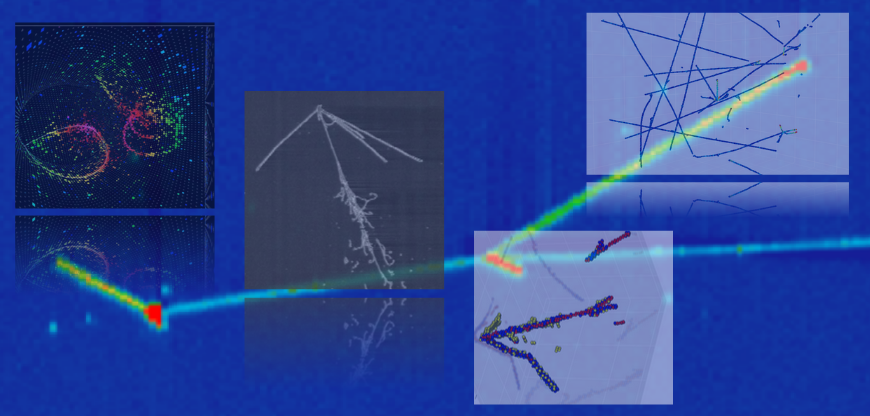Speaker
Description
DUNE is a next-generation long-baseline neutrino experiment aiming to determine
the neutrino mass ordering, study CP violation in the leptonic sector, observe
supernova neutrinos, and search for physics beyond the Standard Model. It will
feature a Near Detector 547 m from the source and a Far Detector ~1300 km away.
Within the Near Detector, the System for on Axis Neutrino Detection includes GRAIN
(GRanular Argon for Interactions of Neutrinos), a novel liquid argon detector
designed to image neutrino interactions via scintillation light, providing vertexing and
tracking.
GRAIN features an innovative cryogenic light readout system consisting of a matrix
of SiPMs with optics based on coded aperture masks (grids of alternating opaque
material and holes). The reconstruction algorithm, based on Maximum Likelihood
Expectation-Maximization (MLEM), combines the views of ~60 cameras providing a
three-dimensional map of the energy deposited by charged particles. This iterative
approach presents a significant computational challenge, requiring optimized use of
multiple GPUs.
The aim of this work is to provide a prior of the expected three-dimensional energy
deposition to serve as a seed for the MLEM algorithm, rather than a uniform
distribution. This improves convergence and reduces GPU load. A deep neural
network (DNN) was trained on simulated charged-current muon neutrino
interactions, using timing information from the cameras. Efficient hyperparameter
optimization was carried out using the OPTUNA framework. The resulting model
produces a better seed for the MLEM algorithm.
The synergy between machine learning and classical algorithms leverages the
speed of DNN predictions together with the precision of MLEM.

